Since Tim and I built Microwulf back in 2007,
I've been contacted by a number of people who have built their own clusters
that they said were inspired by the Microwulf design.
I thought it would be fun to collect them and other related systems
all together on a single page.
You can click on any of the pictures to get a larger image.
|
The first people to contact me with pictures of a working
Microwulf-inspired system
were Sumesh, Arif, and Alok,
three 8th semester CS students
from the IHRD College of Engineering, Attingal,
in India.
Like Microwulf, the Attingal cluster's nodes
all have dual-core CPUs,
they all boot from a single hard disk,
and the nodes communicate via Gigabit Ethernet.
They report they had access to "cheap cases" so they used them
rather than building a custom small-form-factor case.
|
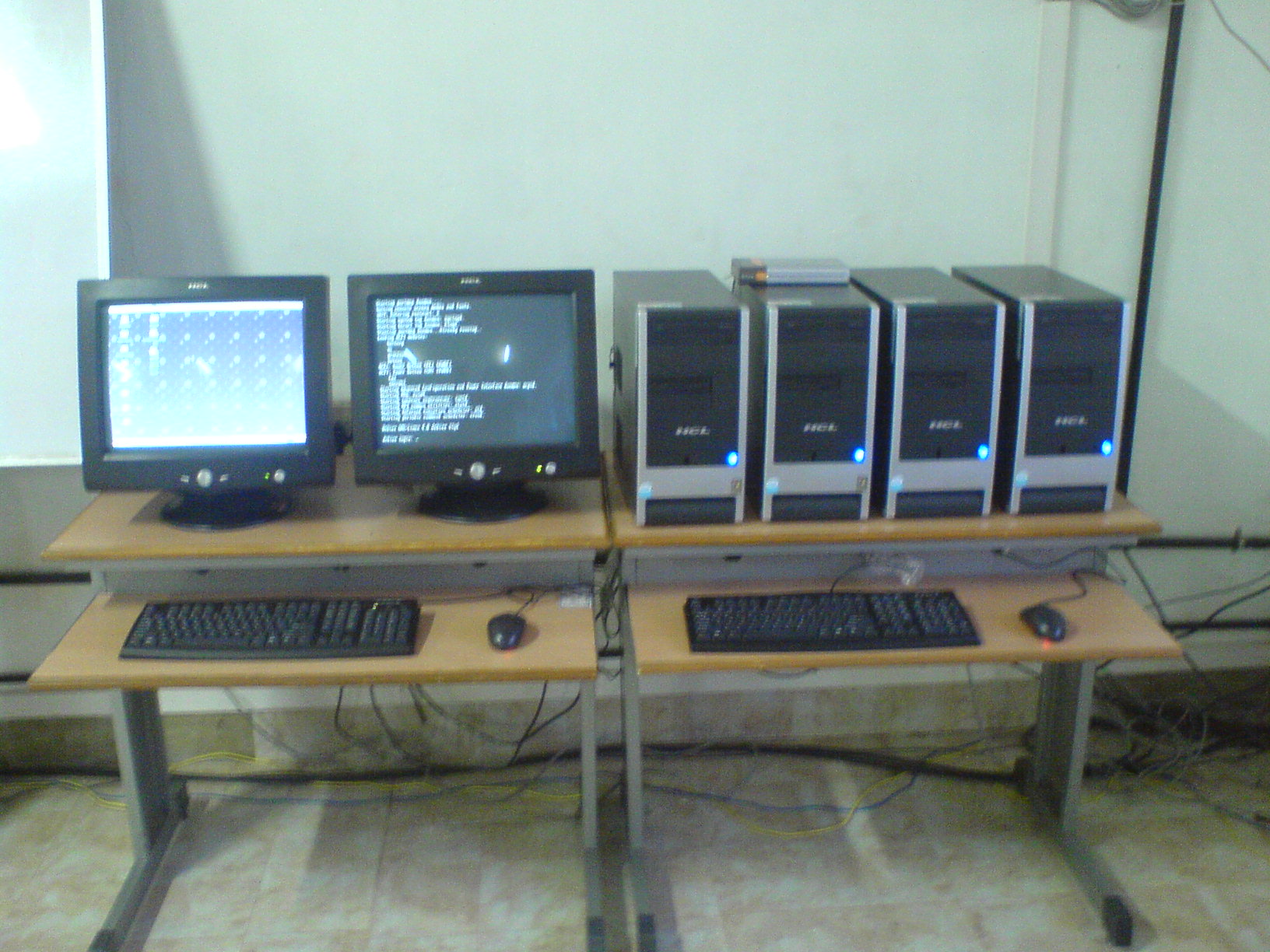
|
|
The second working "offspring" I heard about was
"CamWulf", built by a student known only to us as o21171,
who was studying EET at Cameron University
in Lawton, Oklahoma (USA).
CamWulf looks to follow the Microwulf design pretty closely.
|
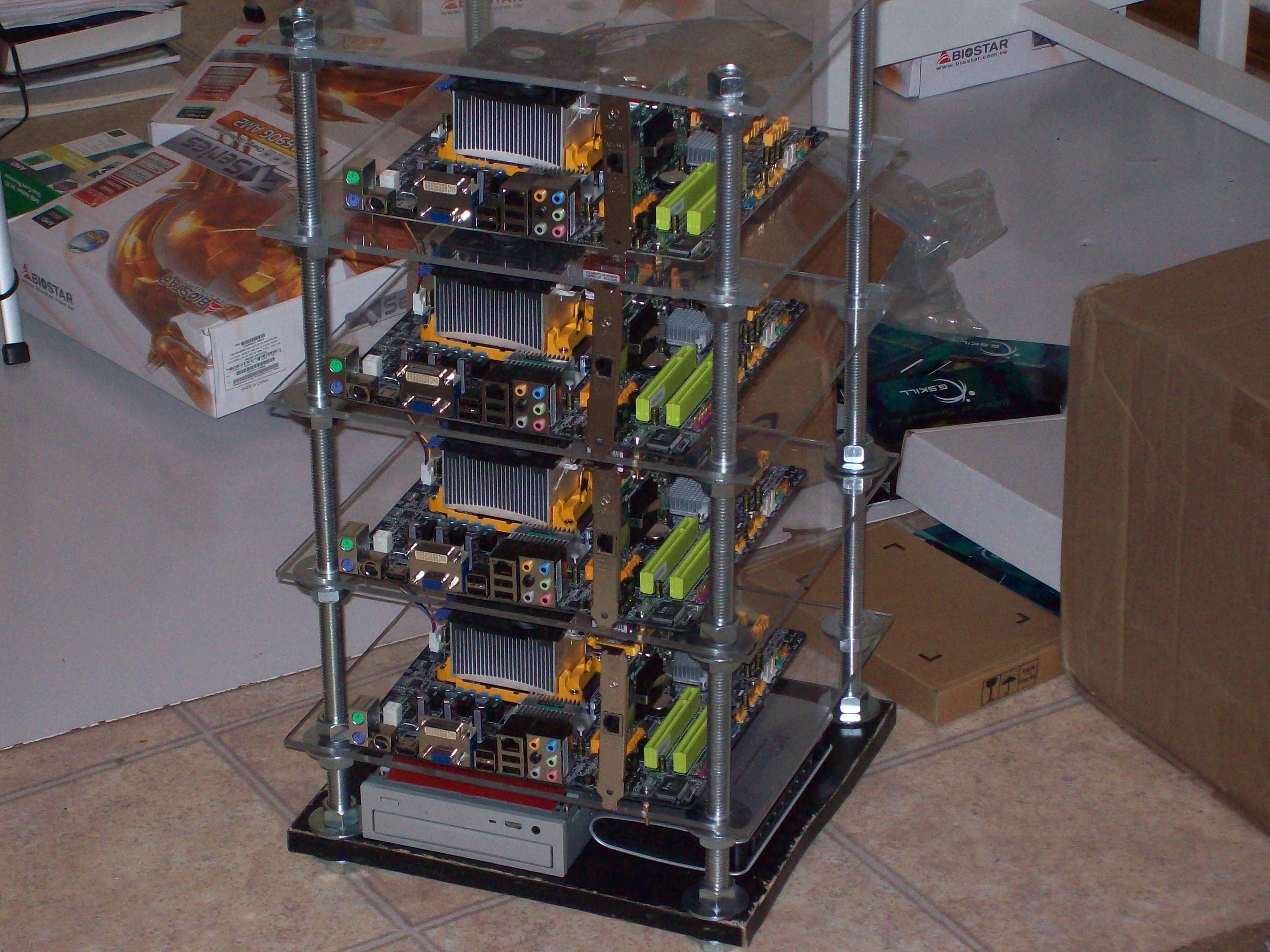
|
|
The third "offspring" I heard about was from
"DeWang", a PhD student at the
University of Electronic Science and Technology of China
in Chengdu, China.
Like CochinWulf (above), this cluster follows the
Microwulf design, but it puts each node in a separate case..
|

|
|
The next related cluster I heard about was
Norbert, a cluster based on the design from the
Limulus Project
(LInux MULti-core Unified Supercomputer),
which is the brainchild of Jeff Layton and Doug Eadline.
Jeff was a co-author of our 2007
article
on the
ClusterMonkey website,
which Doug runs.
|
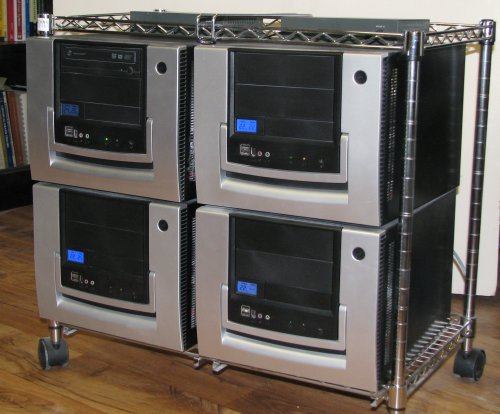
|
|
The next "offspring" I heard about was
Quadrowulf,
built by Justin Moore and Dr. Hayden S. Porter
at Furman University in Greenville, South Carolina (USA).
Quadrowulf was, to our knowledge,
the first Microwulf-style cluster
to use quad-core CPUs.
Their
website
provides excellent documentation of the software configuration process.
All of their project photos are available at
Justin's
Picasaweb site.
|
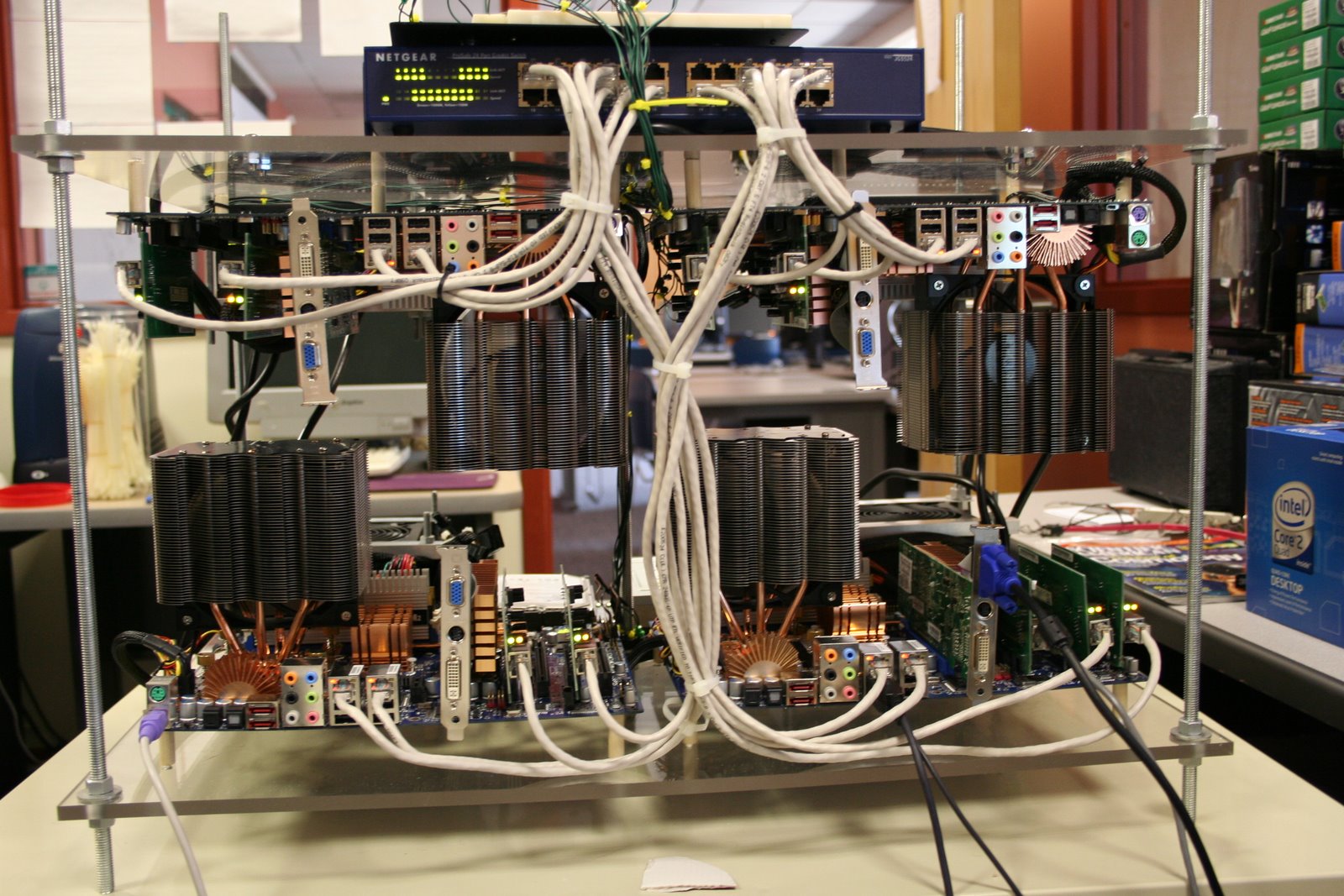
|
|
The next "offspring" system I heard about was
"BlueWulf", built by Chad Nelson,
who lives in Virginia (USA).
|
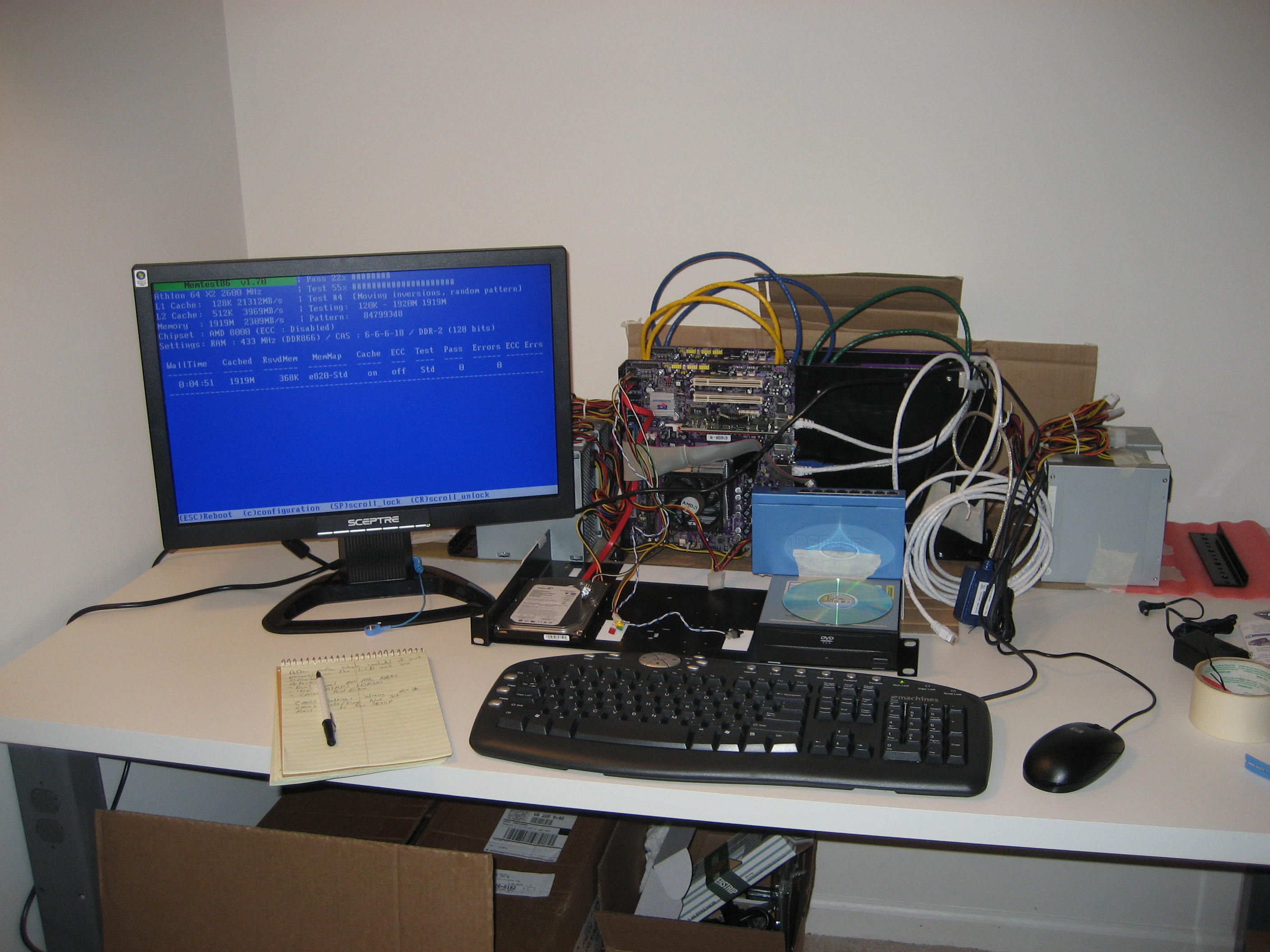
|
|
The next "offspring" I'll call "ErnstWulf",
since it was built by Dan Ernst at the
University of Wisconsin - Eu Claire,
in Eu Claire, Wisconsin (USA).
|

|
|
It apparently wasn't inspired by Microwulf,
but Helmer
is a rendering cluster in an IKEA cabinet,
built by Janne
at Svensk Film Effekt in Upsala, Sweden.
The Helmer website
provides a nice level of detail describing the project.
It has enough similarities that I thought
it worthwhile to include it here
for others to enjoy.
(If you've read this far, I'm assuming you're enjoying this!)
|
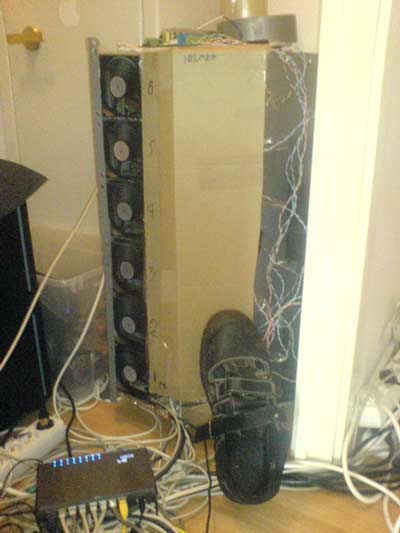
|
|
The next "offspring" cluster I heard about was
"David 1", built by
Michael Everhart, Brad Eidschun, Scott Munizza,
and Dr. Jose D'Arruda at
the University of North Carolina at Pembroke,
in Pembroke, North Carlina (USA).
|

|
|
The next "offspring" system I heard about was
"Grendel", built by Jason Bowen at the
University of California at San Francisco,
in San Francisco, California (USA).
He uses it in their Department of Radiology and Biomedical Imaging
for "image processing, reconstructions, data analysis, etc."
|
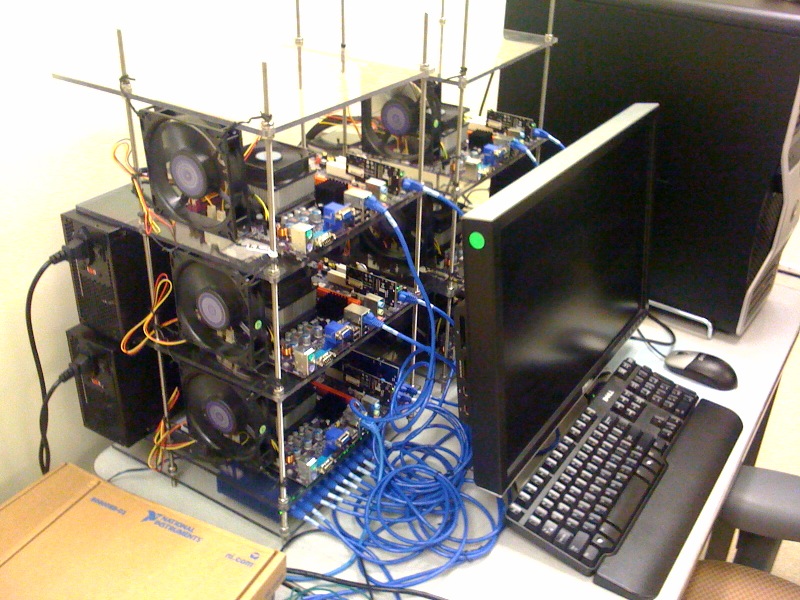
|
|
Next was
Slayer,
the Microwulf of Marquette, built by
masters students Adam Koehler and Michael Schultz under the guidance
of Dr. Craig Struble
in the Dept of Mathematics, Statistics, and Computer Science
at Marquette University,
in Milwaukee, Wisconsin (USA).
Adam sent me this note:
One design alteration of note is that we chose to have the top most
layer only have the upward facing slave node. This allows for easy
viewing and description of parts of the nodes when explaining to
students at fairs held by local high schools or junior highs. Also
contrary to many of the implementations, Slayer is fully enclosed by
plexiglass; another design choice partially based on not wanting
wandering fingers touching the cluster's parts.
The
Slayer website
documents their project nicely.
They even have color-coded their intake fans (blue) and exhaust fans (red)!
|
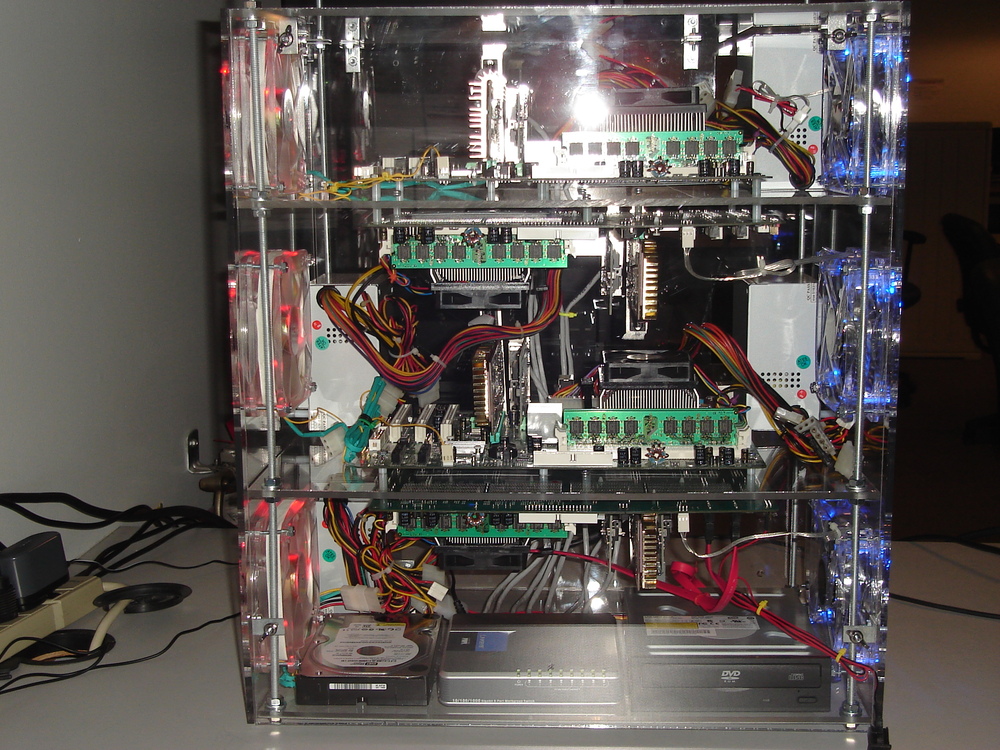
|
|
Another related cluster is this cool,
2-node, 4-CPU mini-cluster
built by Laurent Damay (lolobrin), somewhere in France, I think.
Using some of the ideas of Microwulf, the two-node design
eliminates the need for a switch, since you can just
connect the nodes using a cross-over cable.
This cluster uses a different version of Linux (Debian),
uses OpenMosix to share memory across the nodes, and
uses PVM instead of MPI.
I like it, because it shows you can build a useful mini-cluster
without sticking to the Microwulf recipe.
His site
also includes several nicely documented
parallel programming examples.
(If your French skills are like mine, you may find
Google Translate
to be useful.)
|
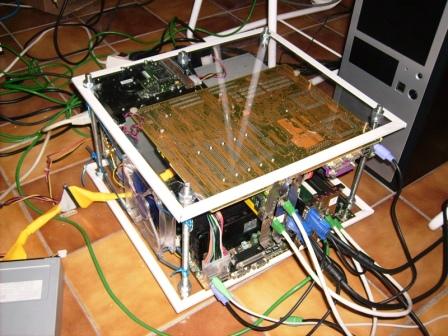
|
|
Another is
Pangloss,
a cluster built by Richard Faulkner, Garrett Richard, Ojasvi Dubey,
Rubab Sayeed, Evan O'Donovan, Kent Klymenko, and Cameron McInally
at Fordham University
in Bronx, New York (USA).
They were hoping to use it to calculate PI using the
Leibniz method, but they seem to have had some motherboard problems.
Since they got three of the four nodes working,
they get an 'A' for effort...
|
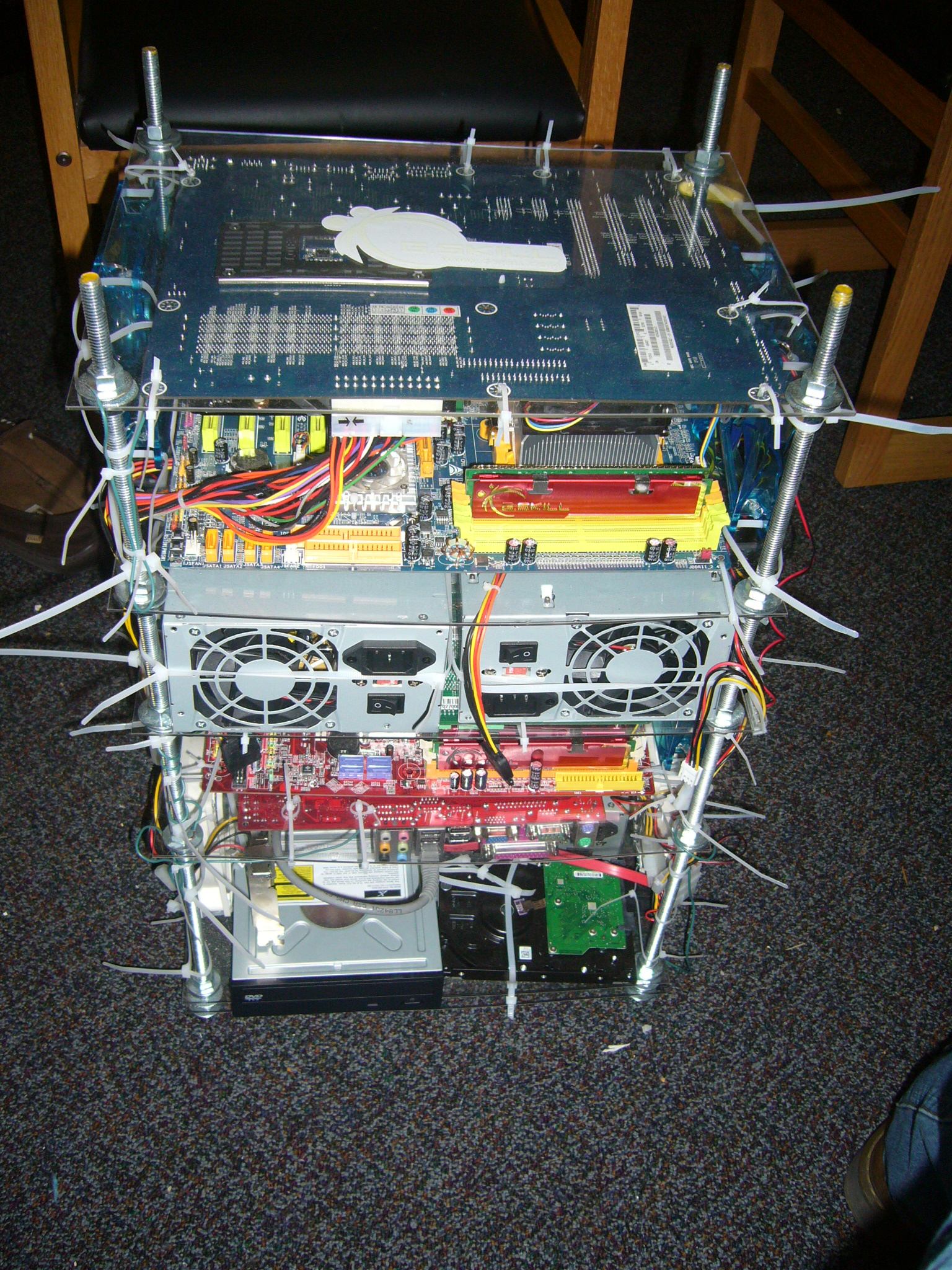
|
|
Another is the
tinyHPC cluster
by Mukarram Ahmad, a student
at Duke University,
in Durham, North Carolina (USA).
His system started out small,
but has grown significantly since the start.
|
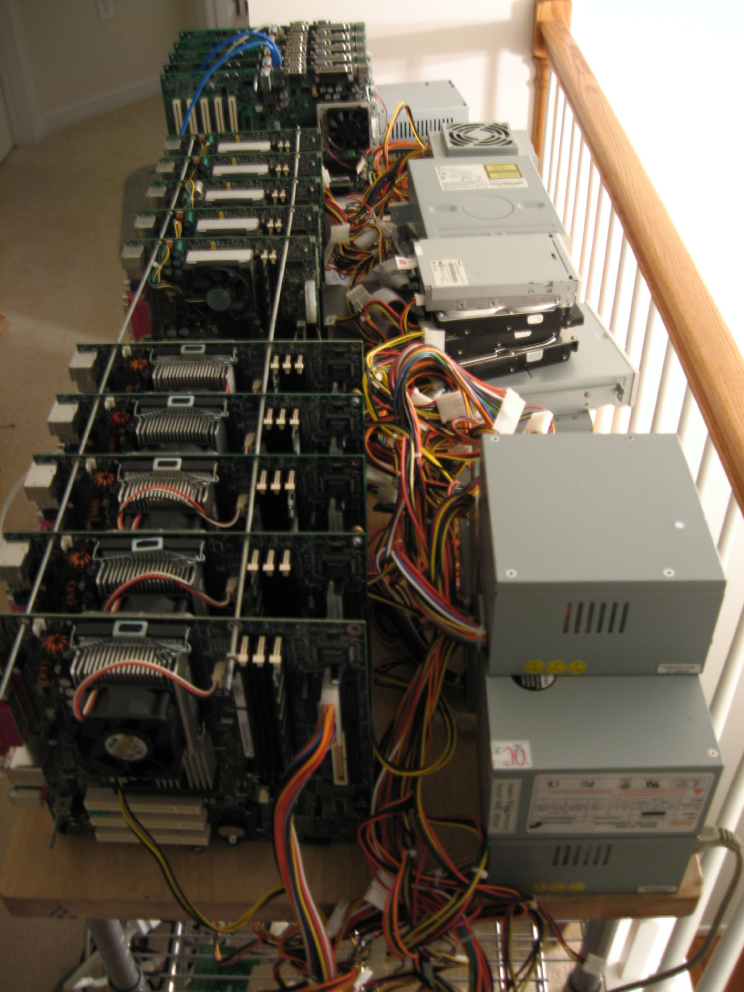
|
|
Another work in progress is the
SCrappy
Cluster by Jason Ernst
at the University of Guelph,
in Ontario, Canada.
|
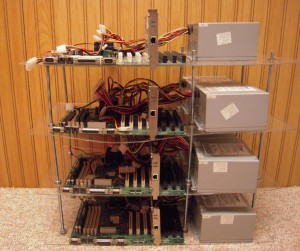
|
|
Another system based on Microwulf is Ukeinwulf, a 6-node cluster
constructed by the synthetic and theoretical inorganic chemist
Dr. Dimitris Manganas and the electrical engineer George Manganas.
Each node has an AMD Phenom (quad core) CPU, providing 24 cores total.
It is programmed and administrated by Dr. Manganas.
Currently Ukeinwulf equips the computational facilities of the inorganic
chemistry group of professor Dr. Panayiotis Kyritsis in the
University of Athens.
Dr. Manganas is using it for ab initio
quantum chemical calculations in synthetic biomimetic complexes.
Please click the picture for more details.
|
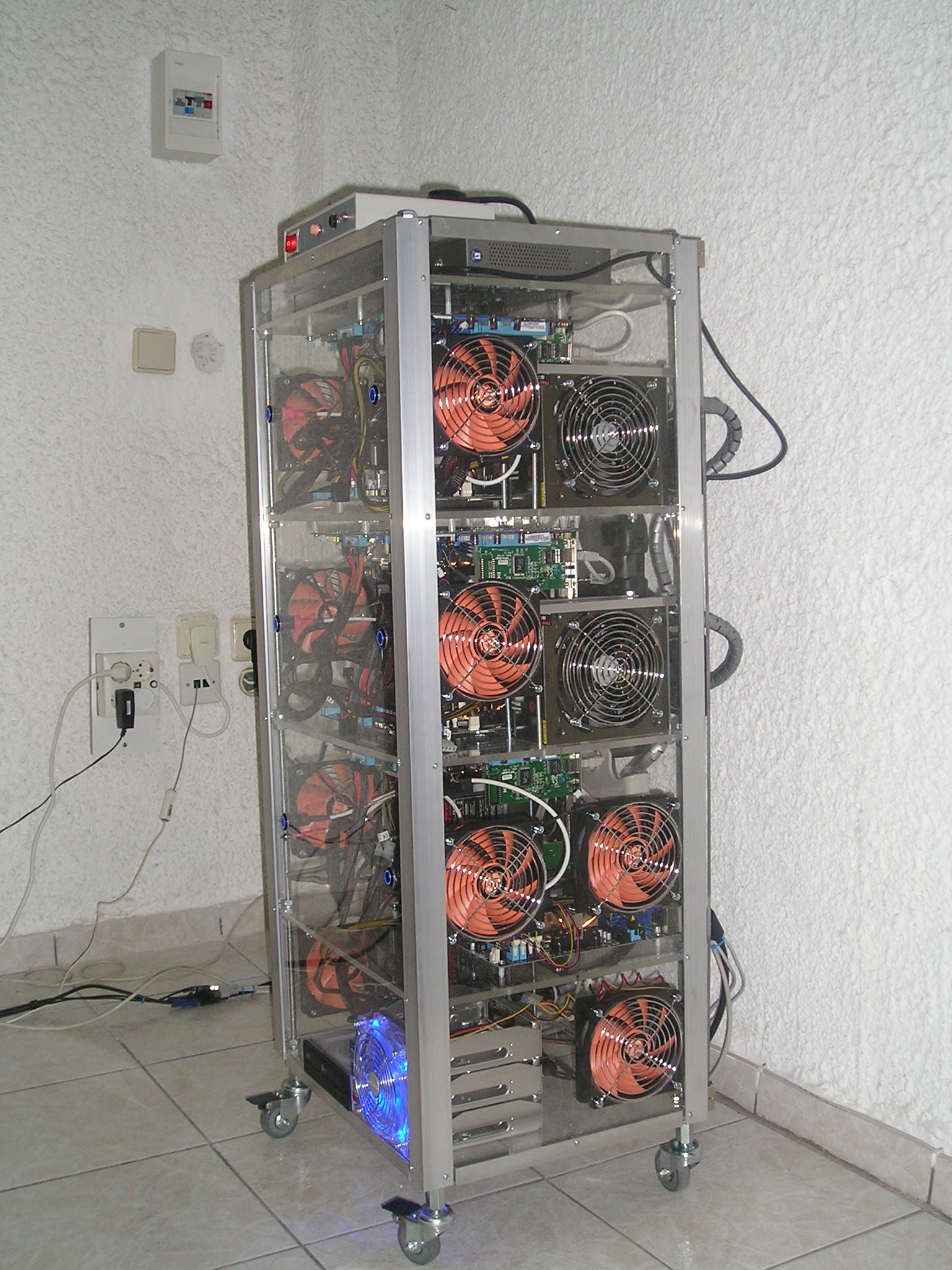
|
|
The Kunkunguo group
from the College of Material Science and Engineering of
Hunan University
has also built a Beowulf cluster based on Microwulf,
to help them conduct research on shapes of biological membranes.
They were also kind enough to send this
list of updates
to Tim's system configuration notes.
|

|
|
George Perdrizet built
Vostok, a cluster of laptops he configured by following our instructions.
More comments are available on
reddit.
|
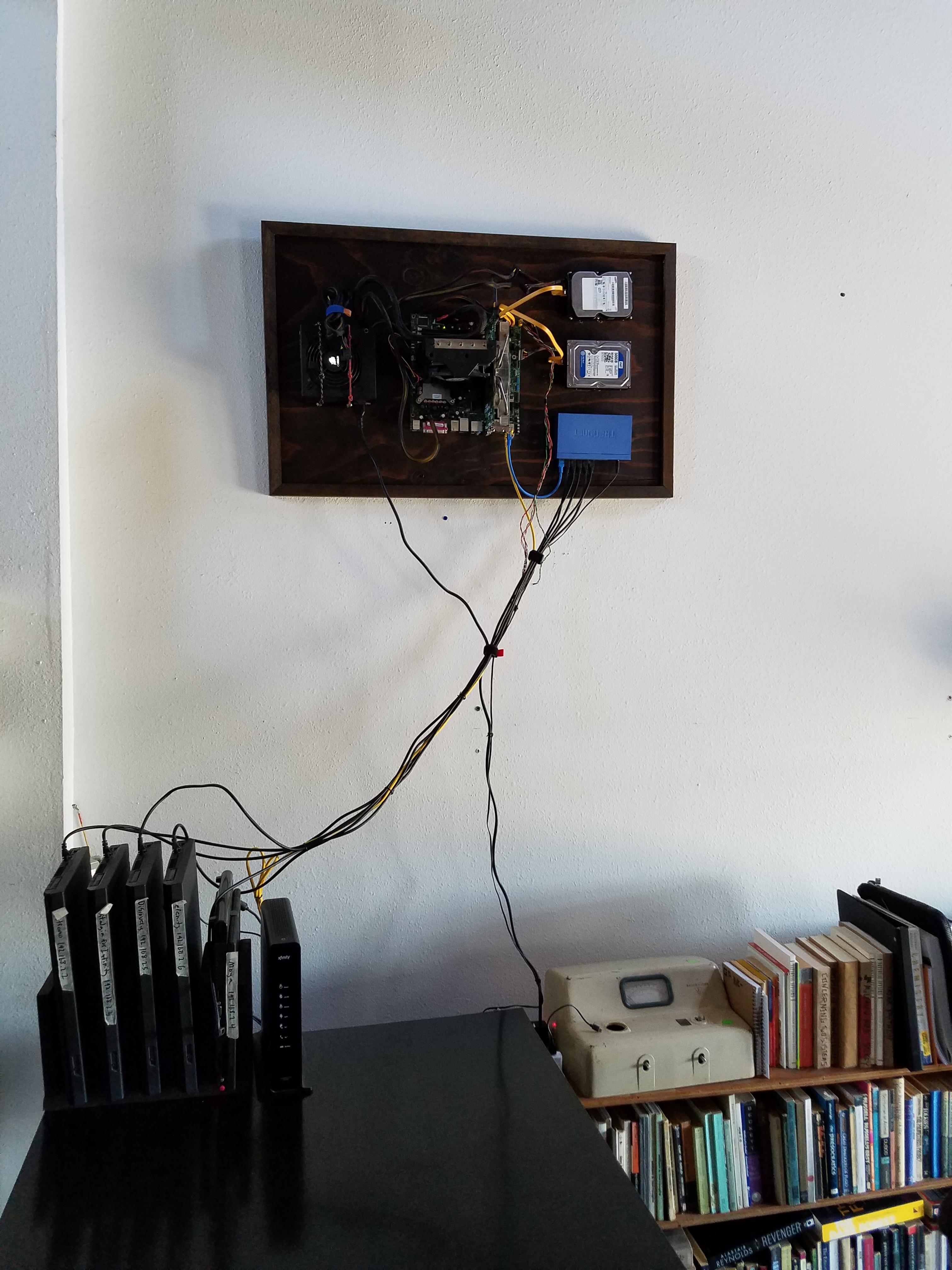
|
|
Libby Shoop and her students at Macalester College built Rosie and
Rosie2.0 (shown at right), a 6-node cluster built from
Nvidia Jetson TK-1 single board computers.
Each Jetson has a quad-core ARM processor and a 192-core CUDA-capable GPU.
Rosie2.0's nodes all share a common solid-state drive (SSD),
communicate through a Gigabit Ethernet switch,
are all powered by a single power supply,
and the system is powered on with a single on-off switch.
|

|
That's all of the related systems and pictures I know of.
Many other people have contacted me and said they were planning
to build personal clusters based on the Microwulf design;
so I have no doubts that there are other related systems out there.
If you have built a Microwulf-inspired cluster,
please send me a picture, any other relevant information,
and I'll add it to this page.
If you have a project website, include the URL and I'll include that too.
Finally,
I've also heard from people who have built small-footprint,
computationally-dense clusters
that predate Microwulf and
Little Fe.
These systems include:

















